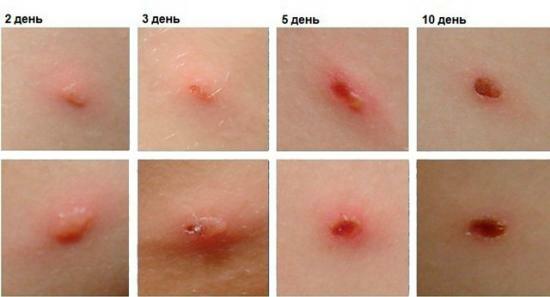Treatment of salmonellosis, causes, symptoms and prevention
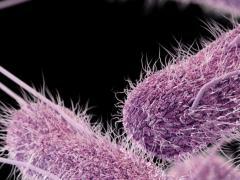
The cause of salmonellosis is a bacterial infection.It affects both animals and humans, both adults and young children.
Contents:
- Causes of development of salmonellosis
- How does infection occur?
- How does the disease manifest itself?
- Clinical picture
- Methods for treating salmonellosis
- Possible complications and prognosis
Causes of development of salmonellosis
The disease was named after the scientist who first discovered it, it was D. Salmon.In 1885, the "swine fever" occurred, the cause of which was precisely these bacteria.Salmonellosis can develop by outbreaks and single cases.
The peak of diseases occurs during the summer period, when hot weather leads to fast deterioration of products.Bacteria multiply and settle in the stomach and small intestine, the transmission route is fecal-oral.
Infection enters the human body with food, the most "dangerous" products:
- minced
- meat dishes
- eggs
- dairy products
If the above products have a specific odor or external lesions, it is better to refuse them.Safe for consumption are fish and products of plant origin.
You can get infected not only by eating contaminated food.There is a risk of catching the infection through household items, especially through non-disinfected medical products.In the street it is possible to get infected through the dust, which contains the litter of infected birds.
Experienced, it was found that there is more chance of getting infected from urban residents than from rural residents, although the latter are more likely to contact animals.
From the animal world, vectors can be:
- wild birds
- pets
- pigs
- chickens
- cattle
For a long time, the bacteria can be kept in a bird litter.The risk of infection includes workers from farms, slaughterhouses, meat processing plants.Carriers of salmonella can be and pets.
You can infect Salmonella from another person.The most susceptible to the disease are children under 1 year old.If a person or animal has strong immunity, then they can be carriers of salmonella during the year, with no external symptoms observed.
Find out more about this disease from this video.
How does the infection occur?
Bacteria enter the human body from the outside, along with contaminated food.The first barrier that bacteria face is the stomach.In a healthy stomach, the environment is acidic, usually under such conditions Salmonella perish.If in the body failures occur, the immunity is lowered, the stomach environment does not correspond to the norm, then the infection easily enters the small intestine.
Half of the bacteria die while excreting endotoxin.This decay product of salmonella causes the first symptoms of the disease.Further, the intestinal epithelial cells and macrophages capture the remainder of the bacteria.The goal of macrophages is to destroy infectious agents and transmit information for the production of antibodies by the body.
While the bacteria are inside the macrophages, they manage to multiply.From there, Salmonella enters the bloodstream and is carried to the internal organs of a person or animal.
First of all they fall into:
- lymph nodes
- lungs
- spleen
- liver
- kidneys
In the internal organs the bacteria are fixed and continue to multiply.If the body's immunity is strong, then the bacteria can not stay in the internal organs for a long time and die.If immunity is weakened, then new lesions will appear.
A person can be an infection carrier and not even suspect about it.Time from the moment of infection until the manifestation of the disease lasts from several hours to three days.Symptoms appear exactly one day later.
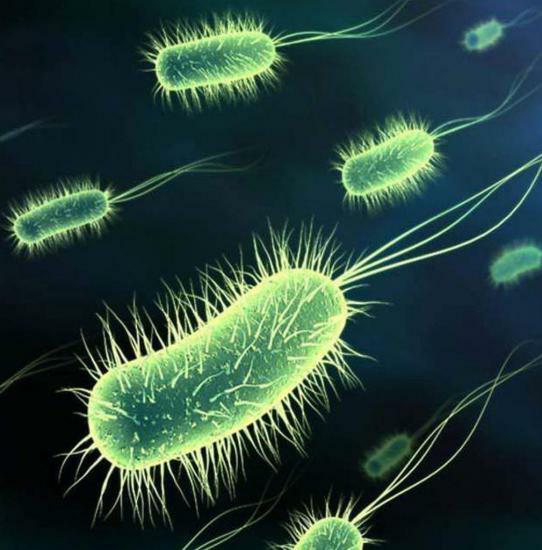
The life cycle of the bacterium is quite long.In milk, she lives about 3 weeks, in sausage products - more than 3 months, in dairy products - up to 2 months, in frozen foods - up to a year.Sometimes Salmonella breeds successfully in food without affecting their taste and appearance.In the process of smoking and salting, the infection does not die.
Microorganisms can be destroyed only by heat treatment with a temperature of more than 80 degrees.A temperature of 60 degrees kills bacteria in one hour.
In order not to catch salmonellosis it is forbidden to eat raw food and swim in muddy water bodies.
How does the disease manifest itself?
Symptoms of the disease manifest themselves differently depending on the form of salmonella.
The clinical form of salmonellosis can be:
- bacteriocarrier( trichithoron, acute, chronic)
- generalized( typhoid-like or septic variant)
- gastrointestinal
- subclinical
If a person is only a carrier of bacteria, then there are no symptoms.Identify the pathogen can only be done with a serological or bacteriological study.Bacteriosis in turn can be transient, acute and chronic.
The acute carrier is said to be isolated from salmonella 15 to 90 days.About chronic carriage it is a question, when salmonella are allocated more than 90 days.
A person is a transient carrier if clinical studies produce positive or negative results.
The generalized form is divided into two variants: typhoid-like and septic.Typhoid-like salmonellosis begins with acute symptoms.There is a general intoxication of the body, which is manifested by intestinal disorders, fever, low blood pressure, heart sounds are muffled.A few days later the work of the intestines is restored, but the body temperature remains high.
The fever then disappears, then it returns, the person feels sluggish, the skin is pale.Over time, there is a rash on the skin of the abdomen.A week after infection, the spleen and liver are enlarged.The disease leaves the body after about 15-20 days.
The septic form is more complex.The patient's condition is severe, the body temperature is high, a strong chill is felt, sweating is increased.Foci of lesions appear in different organs, most often affect the musculoskeletal system.The course of the disease is long, difficult to give antibacterial therapy.
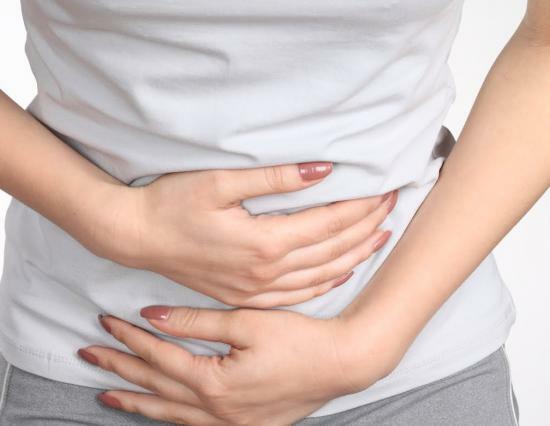
The most common form of the disease is gastrointestinal( 97% of cases).
Main symptoms:
- body temperature from 38 degrees
- chills
- abdominal pain
- nausea and vomiting
- stool disorder
If the salmonella is mild, the body temperature is between 37-37, 5 degrees, stool liquid a few days.If the disease has a medium-heavy course, the body temperature is maintained at 38-39 degrees, repeated vomiting, loose stool until 7 days, low blood pressure.
Severe course characterized by body temperature above 39 degrees, repeated vomiting, stool liquid, offensive, with an admixture of mucus.Symptoms are observed for more than 7 days, the liver and spleen are enlarged, the skin acquires a yellow tint.
Arterial blood pressure is significantly lower, tachycardia is observed, there are changes from the kidneys.In the blood, the level of erythrocytes and hemoglobin increases.
With subclinical form of salmonellosis, symptoms are absent.Determine the disease can be on the allocation of bacteria from the feces.
To assess the severity of the disease, the doctor is guided by the symptoms.Typical for salmonellosis symptoms: fever and abnormalities in the work of the digestive tract.

Clinical picture
Salmonellosis occurs in both adults and children.In the world there are about two thousand species of salmonella, of which 500 can affect the human body.In feces, bacteria can live up to 3 years, in reservoirs up to six months.Most Salmonella species are resistant to antibiotics, but they die instantly when disinfected with chlorine-containing solutions.
Adult
So that an adult does not become infected with salmonella, you need to follow some rules of prevention.Before eating, you should always wash your hands, for meat and fish there should be separate knives and cutting boards.After cooking meat, knives and utensils are rinsed with boiling water.
You can not eat poorly fried meat and poultry, cook these products for at least an hour.It is not recommended to drink raw eggs, if necessary wash it with soap.Milk in food is used boiled.Especially for the quality of products you need to follow in the summer.
If an adult has weak immunity, then salmonellosis can lead to serious consequences.For example, cardiac or hepatic insufficiency, pneumonia, urinary tract diseases may occur.
Treatment is carried out at home, with severe forms - outpatient.The infectious disease doctor analyzes the patient's age, the stage of the inflammatory process, and the general health of the patient.At treatment antibiotics are not applied, as they detain in an organism toxins and salmonella, that tightens duration of illness and increases intoxication.
After the transferred disease it is necessary to take care of the restoration of water-salt metabolism, to use vitamins and microelements.

Children
The older the child, the less pronounced and dangerous his symptoms are.It is difficult for children under 1 year to tolerate salmonellosis.
After infection typical symptoms of intoxication are observed:
- elevated body temperature
- loss of appetite
- general weakness
- hysterical fits
After about 4 days, the child begins diarrhea.For one day the amount of stool can increase up to 10 times.The feces are green in the child, watery.If you do not take action, then a week later in the feces you can see the blood.
At the first signs of salmonellosis, you need to call an ambulance.Before the arrival of the doctors, the child needs to provide a copious drink with the addition of Regidron, Oralit, etc.
The patient should also be protected from contact with other strangers.Untimely treatment can lead to irreversible consequences, lethal outcome.
In children with salmonellosis, dehydration is observed, the skin becomes drier, there is not enough moisture to the mucous membranes.
Newborns show signs of gastrointestinal tract damage.The temperature is low, there is no appetite, weight is not added, often the stomach is swollen, belching appears.If the immunity is weakened, there are lesions that can occur in the meninges, lungs, liver and kidneys.
More adult children carry the disease more easily, but the flow is more acute.The temperature rises to 38 degrees, there is repeated vomiting, severe headache.The general condition of the child is weak, after a few days, diarrhea is added to the symptoms, the body is dehydrated.
After recovery, symptoms may return, even though there are no bacteria in the body.Can come back dysbiosis, diarrhea, bloating.Sometimes the disease develops into chronic pancreatitis or colitis.
After three weeks, the bacteria leave the body of the child, in infants the symptoms can remain for several months.
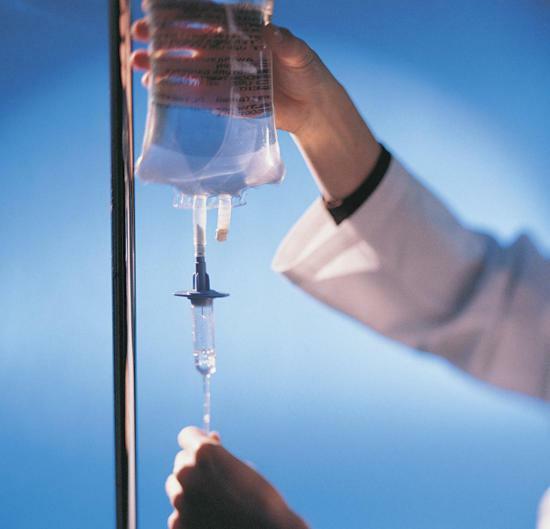
Methods for treating salmonellosis
Salmonella treatment in a hospital is performed in severe forms, in children and the elderly.Light forms of salmonellosis are treated at home.Treatment is complex, first non-steroidal anti-inflammatory drugs are taken.In parallel, drugs are used to protect the gastric mucosa.
After this, it is necessary to remove all toxins from the body.With this task, activated carbon, Enterodes, Lignosorb, Polyphepan, etc. will help to cope.
To neutralize toxins, the following enzymes are used: Mezim, Pancreatin.In addition, the body is saturated with an alkaline solution and calcium.To neutralize the infection will help Furagin, Furadonin, Furazolidon, Intetriks, Entero-Sediv.In case of a moderate course, Ciprofloxacin is prescribed, with severe Ofloxacin or Ciprofloxacin.
To restore the salt balance after the disease, glucose-saline solutions are used.
Because toxins can go through the skin, special care is needed for the skin.To raise the immune system suitable for vitamin C, drugs routine.
Return the efficiency of the gut and affect her neuromuscular apparatus will help Galidor, Papaverin, Platifillin, Buskopan, Belladonna.Over the next month, you will need to take medicines to restore the intestinal biocenosis.
Salmonella shows diet and table number 4.Products excoriating the stomach and intestines are excluded.The food should be high-grade, so that the reporter processes in the digestive tract stop.The menu should not contain products that enhance peristalsis and fermentation processes.Completely need to give up alcohol and spicy dishes.
In the treatment it is necessary to provide complete rest to the patient.Medications can help get rid of the pathogen, and diet - to adjust the work of the digestive tract.
Possible complications
For a person with strong immunity salmonellosis is not dangerous.Infection with bacteria can cause complications in children, the elderly, pregnant women, patients with weak immunity.
The first place among the complications is dehydration, that is, dehydration of the body.There are symptoms such as a small amount of urine, dry mouth, tachycardia, sunken eyes, low skin turgor.Dehydration is due to a large loss of fluid with diarrhea.
With the blood flow, bacteria spread throughout the body, so salmonellosis can cause inflammation in any of the internal organs.
Bacteria can cause serious illnesses such as:
- Osteomyelitis
- Endocarditis
- Meningitis
- Reactive arthritis
Reactive arthritis causes joint pain, trouble with urination, eye irritation.

In 1% of patients, there is such a complication as infectious-toxic or dehydration shock, this is the most serious complication.In many cases, there is acute renal failure, pulmonary or brain edema, hemorrhagic syndrome.
If the body is very dehydrated and the general condition is weak, there may be a loss of consciousness.At the same time, the skin becomes cold, sweat appears.The pulse increases, the pressure goes down.Older people are more likely to collapse, which can also get cardiovascular failure.
The prognosis depends on several factors, such as the age of the patient, the timeliness and accuracy of the diagnosis, the clinical condition, and the adequacy of the treatment.
Patients with gastrointestinal form usually do not face health problems after recovery, the prognosis is favorable.
In severe cases lethality with salmonellosis is 0.3%.In childhood, up to 1 year and in advanced age, serious complications are possible.Also, the danger is when the child has other chronic pathologies that significantly weaken the overall immunity.
Overall, the outlook is favorable.After recovery, it is necessary to keep the diet for a while and not to allow the weakening of immunity.
Salmonellosis is not a dangerous disease, although the symptoms cause a lot of inconvenience.It would seem that innocuous bacteria, which are easily managed by strong immunity, can lead to severe consequences in children and the elderly.


